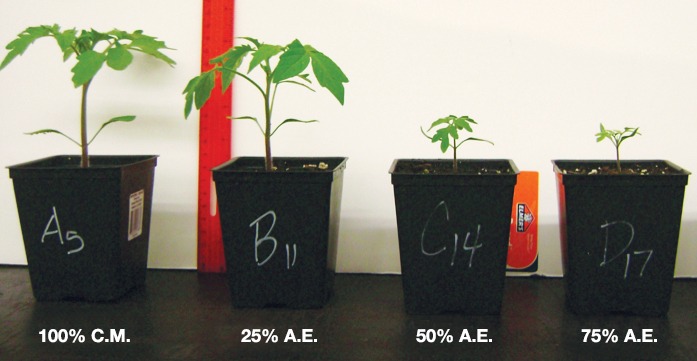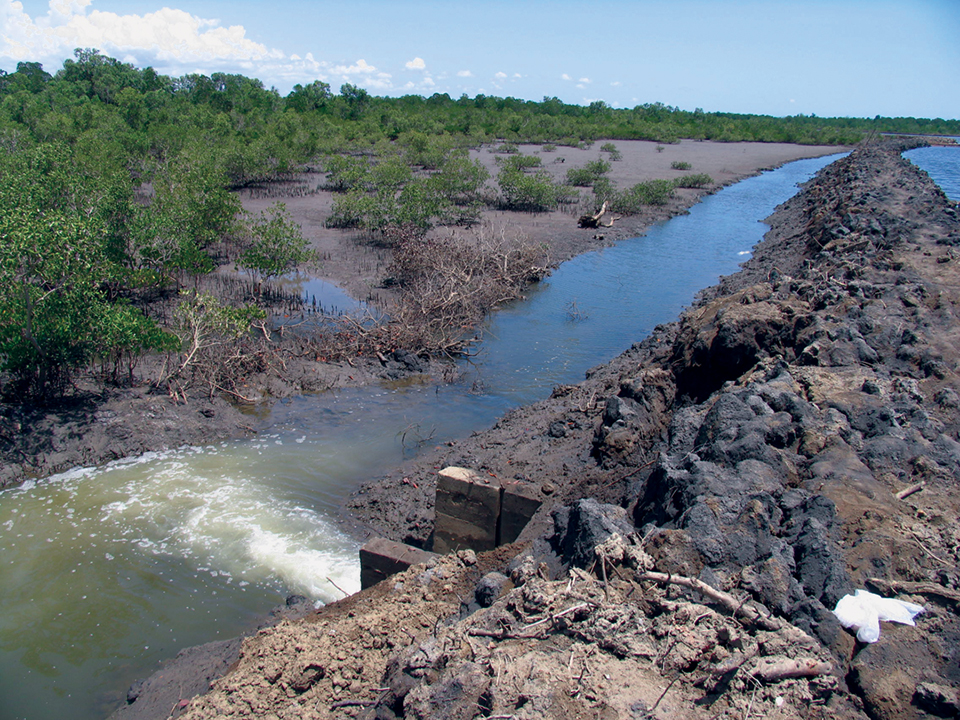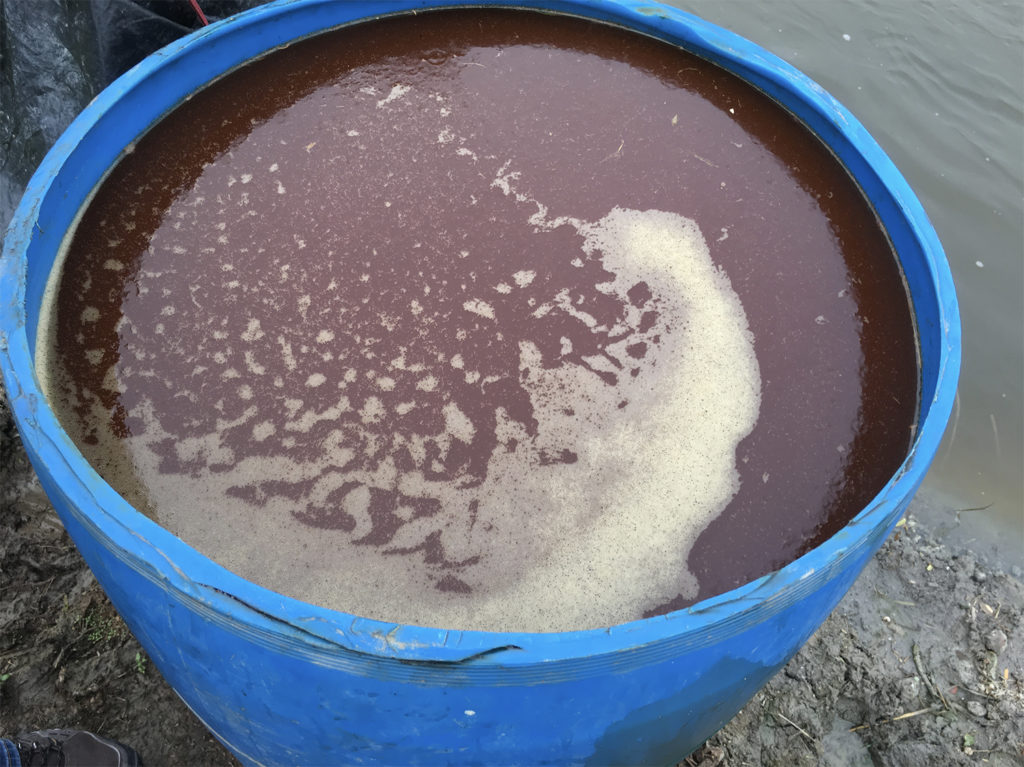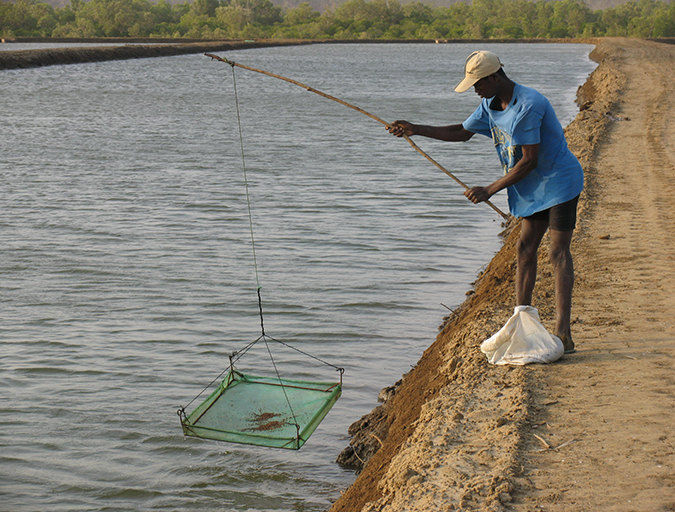Best management practices to allow compliance with GAA Codes of Practice must be established

A major environmental consideration in shrimp farming is the possible negative impacts of pond effluents on coastal water quality. Pollutants in effluents can cause eutrophication (nutrient enrichment), organic enrichment, sedimentation, and toxicity resulting in degradation of coastal ecosystems and loss of biodiversity.
Many of the best management practices (BMPs) suggested in the GAA “Codes of Practice for Responsible Shrimp Farming” were designed to prevent adverse impacts of pond effluents. One objective of these practices is to duplicate the beneficial environment effects achieved by governmental regulation of effluents in the United States and certain other countries.
This is necessary because adequate systems of environmental regulations are not available in many shrimp producing nations. Voluntary adoption of better practices by the shrimp farming industry can provide environmental protection and demonstrate environmental stewardship.
Most shrimp farmers have only a vague idea of the nature of regulations imposed on effluents in some countries. Knowledge of the structure, implementation, and enforcement of these regulations should be of interest to shrimp farmers. Thus, the main features of the system of effluent regulation in the United States will be summarized below.
A primary aspect of water pollution control is a permit for discharge of pollutants into natural waters. The Clean Water Act in the United States requires a National Pollution Discharge Elimination System (NPDES) permit for every discharge of pollutants. The holder of an NPDES permit has the right to discharge certain pollutants at a specified point for a given period (usually 5 years). NPDES permits contain effluent limitations, monitoring requirements, and reporting schedules. They also may contain other features such as use of BMPs to prevent or reduce the release of pollutants or to clean up spills. Some may also have conditions related to operation of treatment systems, record keeping, inspection and entry and others.
Classification of water bodies
Concentration limits often are used in water discharge permits to control the amounts of pollutants released into natural waters so that water quality does not deteriorate. The task of assigning effluent limitations is facilitated by classifying water bodies according to their anticipated maximum beneficial use.
These include public drinking water supplies, propagation of fish and wildlife, recreational activities, industrial and agricultural water sources, navigation, and other uses. Each water use requires a certain level of water quality. Water bodies can be classified into use categories and each use category assigned water quality standards. A water quality standard is a plan established by governmental authority for water pollution prevention and abatement.
A stream classified for agricultural and industrial use could have lower standards than a stream designated for fisheries. One objective of classifying water bodies is to have a means of forcing water users to limit or treat discharges to prevent water quality from violating the standards. Use classification has been applied primarily to streams, but it can be used for any type of water body or water source.
Most waters already were receiving pollution and were degraded below their pristine condition before classification was applied. Nevertheless, by classifying water bodies, a government can prevent water quality from degrading further.
Water quality criteria
Water quality criteria are the quantitative or qualitative values that depict the acceptable ranges of physical, chemical, biological and aesthetic characteristics of water. Once classification systems for water bodies are available, the major focus is on limiting pollutant levels in effluents so that water in receiving bodies of water comply with their standards. This is a difficult task.
The writer of an effluent permit has the responsibility to protect the environment while not unduly penalizing the industry that must discharge the water. The standards and criteria in effluent permits are based on experience, technical and economic attainability, bioassays and other tests, ability to reliably measure the criteria, evidence of public health effects, educated guess or judgement, mathematical models, and legal enforceability.
There is considerable experience with water quality standards, and many water quality guidelines have been published. Still, the permit writer must decide upon the safe limits of pollutants in effluents in order to achieve the goals of these guidelines. Permits must be renewed at intervals, and obvious flaws in permits may be negotiated between the permit holder and the permitting agency. No permit is perfect, but discharge permits with water quality standards and criteria are the main tool in protecting the quality of aquatic ecosystems.
The simplest standards in effluent permits have criteria regarding permissible concentrations of selected water quality variables. Examples of concentration- based criteria in a water quality standard are noted in Table 1 below.
Boyd, Concentration-based criteria in a water quality standard, Table 1
| Variable | Permissible Range |
|---|
Variable | Permissible Range |
|---|---|
| pH | 6-9 |
| Dissolved oxygen | 5 mg/L or above |
| Biochemical oxygen demand | 30 mg/L or less |
| Total suspended solids | 25 mg/L or less |
Water quality standards also may have mass-based criteria (concentration multiplied by effluent volume). The BOD limit might be given as a daily maximum discharge (load) of 100 kg BOD/day. This means that a higher BOD concentration would be allowable at a low discharge volume. It is necessary to specify maximum concentrations of pollutants in massbased criteria to avoid an excessive concentration of one or more variables in the mixing zone, where the effluent is diluted by receiving waters. The BOD criteria mentioned above might be given as a maximum BOD load of 100 kilograms per day, with the maximum BOD concentration not to exceed 60 milligrams per liter during any 24-hr period.
Sometimes, the water quality standard will specify the maximum allowable increase for one or more variables. Qualitative criteria may be included in standards. For example, there might be a provision that a visible turbidity plume at an outfall is unacceptable, or there can be no odors or foam in an effluent.
In addition to preventing the receiving water from violating standards for its use classification, the dilution and mixing of the effluent in the receiving water must be considered. The purpose of this activity is to prevent water quality deterioration in the area around the outfall, yet recognizing that standards could be exceeded within the mixing zone so long as acutely toxic conditions do not exist. In addition, water quality in the mixing zone must be adequate to assure the well being of the established aquatic community in the water body, and to allow the designated use to continue.
Total maximum daily loads
In some waters, technology-based effluent limitations are not adequate to meet water quality standards. In such cases, total maximum daily loads (TMDLs) must be calculated. This involves calculating the maximum amount of the pollutant from all sources (natural or pollution) that can be allowed without causing the water body to violate its standard. In these situations, the TMDL of a pollutant must be allocated among the different sources of the pollutant.
For example, suppose a stream reach has a TMDL for phosphorus of 500 kilograms per day, that several industries want to discharge into the stream reach, and that natural sources of phosphorus total 100 kilograms per day. The maximum amount of phosphorus that can be contained in effluents is 400 kilograms per day, and this amount normally would not be allowed in order to have a safety factor. If a safety factor of 2 is used, only 200 kilograms per day of phosphorus can be allowed. This load would then have to be allocated among the different industries by some means.
Toxicity limitations
It is very difficult to establish criteria for heavy metals, agricultural chemicals, and industrial chemicals in water quality permits, because the toxicity of some substances varies greatly with water quality conditions. Thus, there is considerable use of toxicity- based limitations that are established by whole effluent toxicity testing. The toxicity tests are conducted by exposing certain species of aquatic organisms to the effluent in question. An NPDES permit may require that toxicity testing be done to prove that the effluent is not acutely toxic to organisms in the receiving water body.
Compliance and enforcement
Many times it is not possible for water discharge permit holders to comply immediately with the conditions of the permit, and a schedule for compliance may be specified. Most governments depend largely upon self-monitoring to document compliance with conditions of permits. However, the permit will specify the minimum monitoring requirements including frequency of sampling, type of sample, variables to be analyzed, and reporting schedule. Permits normally require that the permit holder immediately report discharges that are not in compliance.
Enforcement of water discharge permits normally is by way of administrative actions, because the permit holder must report compliance or noncompliance with the permit on a scheduled basis. In theory, the permit holder should realize when compliance is not achieved and work to correct the problem. The administrative actions may take various forms depending upon the type of violation. An order to comply may be issued with a compliance schedule.
For serious violations, the administrative order may include a fine or other penalty. Failure to comply with administrative orders can lead to criminal prosecution. Both civil and criminal judicial enforcement is possible if administrative orders do not solve problems related to permits. The penalties resulting from judicial enforcement are more severe than those resulting from administrative orders.
Conclusions
In order for the GAA Codes of Practice program to achieve environmental benefits similar to those obtained by governmental effluent regulations, minimum effluent standards and criteria, and best management practices to allow compliance with these standards must be established. In addition to a formal system of BMPs and standards with criteria, the GAA also will need to develop a system to demonstrate compliance with the effluent management aspect of its program.
GAA must accomplish a complex and difficult task formulating a system of effluent management for its members, a system that is technically and economically feasible, protective of coastal water quality and acceptable to other parties.
(Editor’s Note: This article was originally published in the February 2000 print edition of the Global Aquaculture Advocate.)
Now that you've reached the end of the article ...
… please consider supporting GSA’s mission to advance responsible seafood practices through education, advocacy and third-party assurances. The Advocate aims to document the evolution of responsible seafood practices and share the expansive knowledge of our vast network of contributors.
By becoming a Global Seafood Alliance member, you’re ensuring that all of the pre-competitive work we do through member benefits, resources and events can continue. Individual membership costs just $50 a year.
Not a GSA member? Join us.
Author
-
Claude E. Boyd, Ph.D.
Professor, Department of Fisheries and Allied Aquacultures
International Center for Aquaculture and Aquatic Environments
Auburn University, AL 36849-5419 USA
Tagged With
Related Posts

Responsibility
Aquaculture effluent partially replaces growing mix for plant production
Aquaculture effluent can be an effective fertilizer in land-based plant production. Research with tilapia utilized dewatered aquaculture effluent (A.E.) as a partial substrate replacement for tomato plant seedlings. Seedling growth decreased when effluent replaced a commercial growing mix at 25 percent or more.

Responsibility
Best management practices minimize impacts of aquaculture effluents
Both aquaculture effluents and production costs can be reduced by using stock-specific feeds applied in smaller quantities several times a day.

Responsibility
Bacterial amendments in shrimp grow-out ponds
Pond microbial communities are a critical and often overlooked component of aquaculture ecosystems. Bacterial amendments like probiotics provide significant support to shrimp farmers around the world.

Health & Welfare
Decomposition and accumulation of organic matter in ponds
Aquaculture ponds accumulate organic matter from organic fertilizer, remains of microorganisms produced within the pond, feces of the culture animals and uneaten feed. Claude E. Boyd, Ph.D., details the leading organic matter management practices, and says that the accumulation of organic matter is often not as great as believed.



